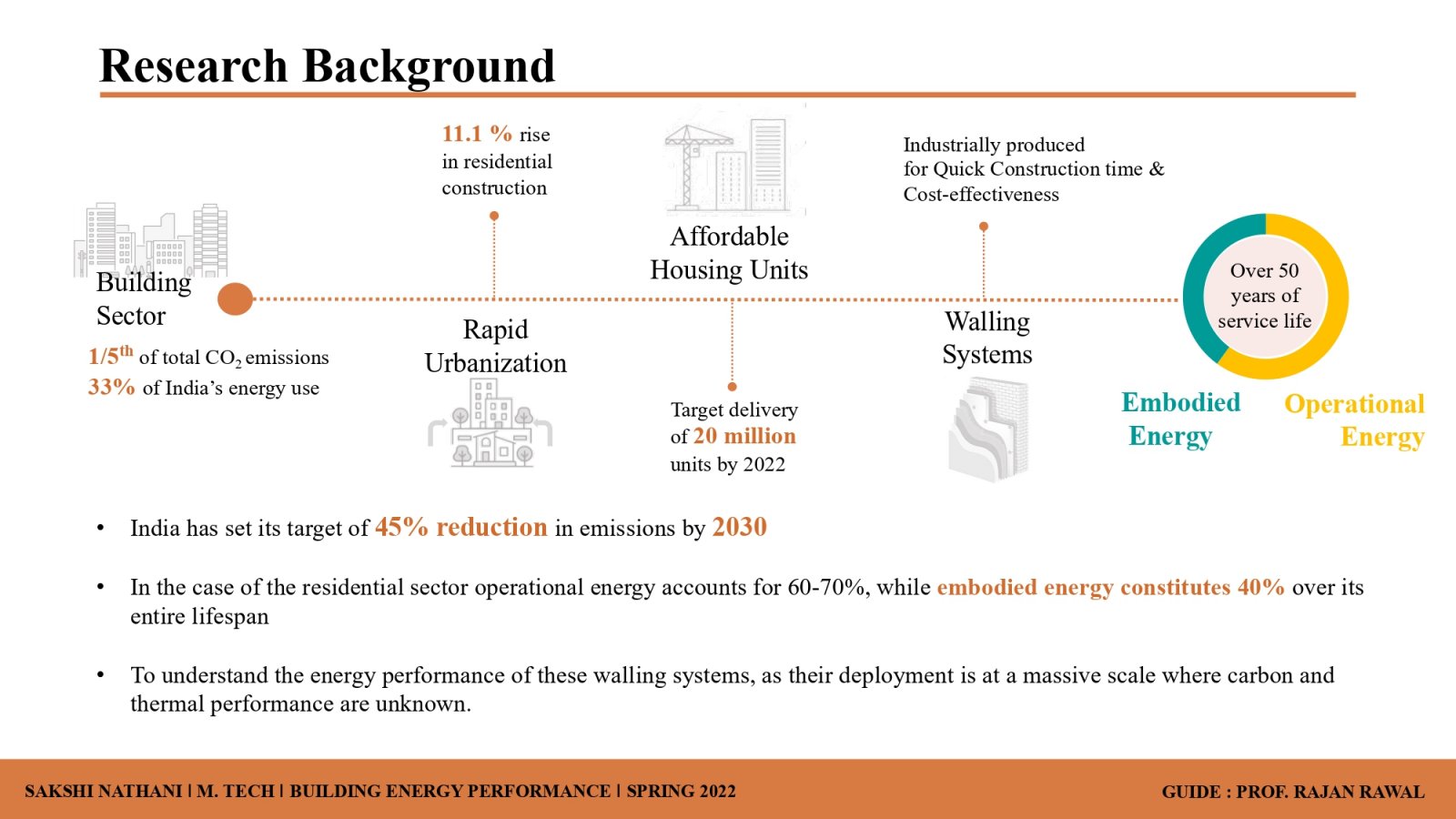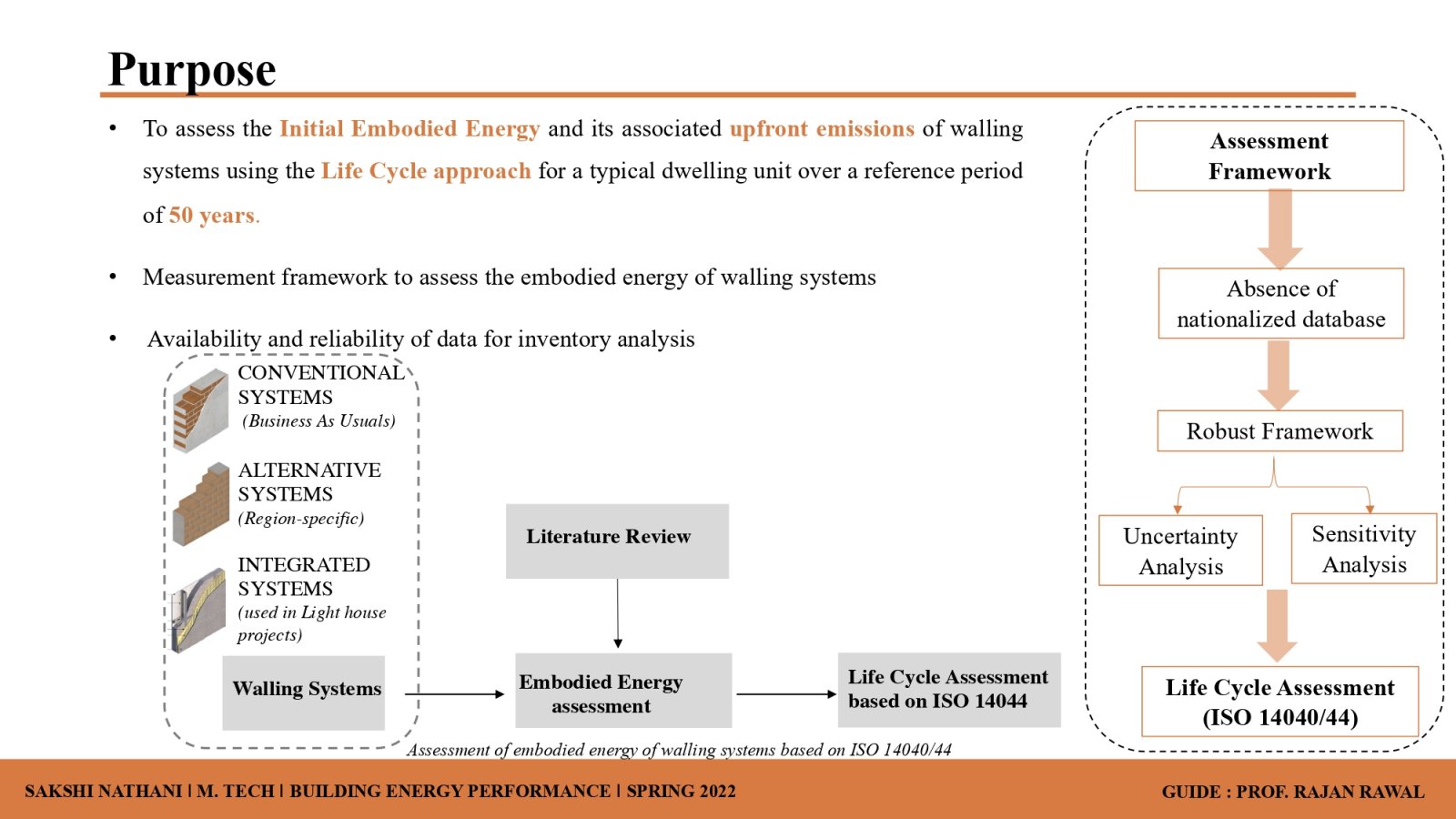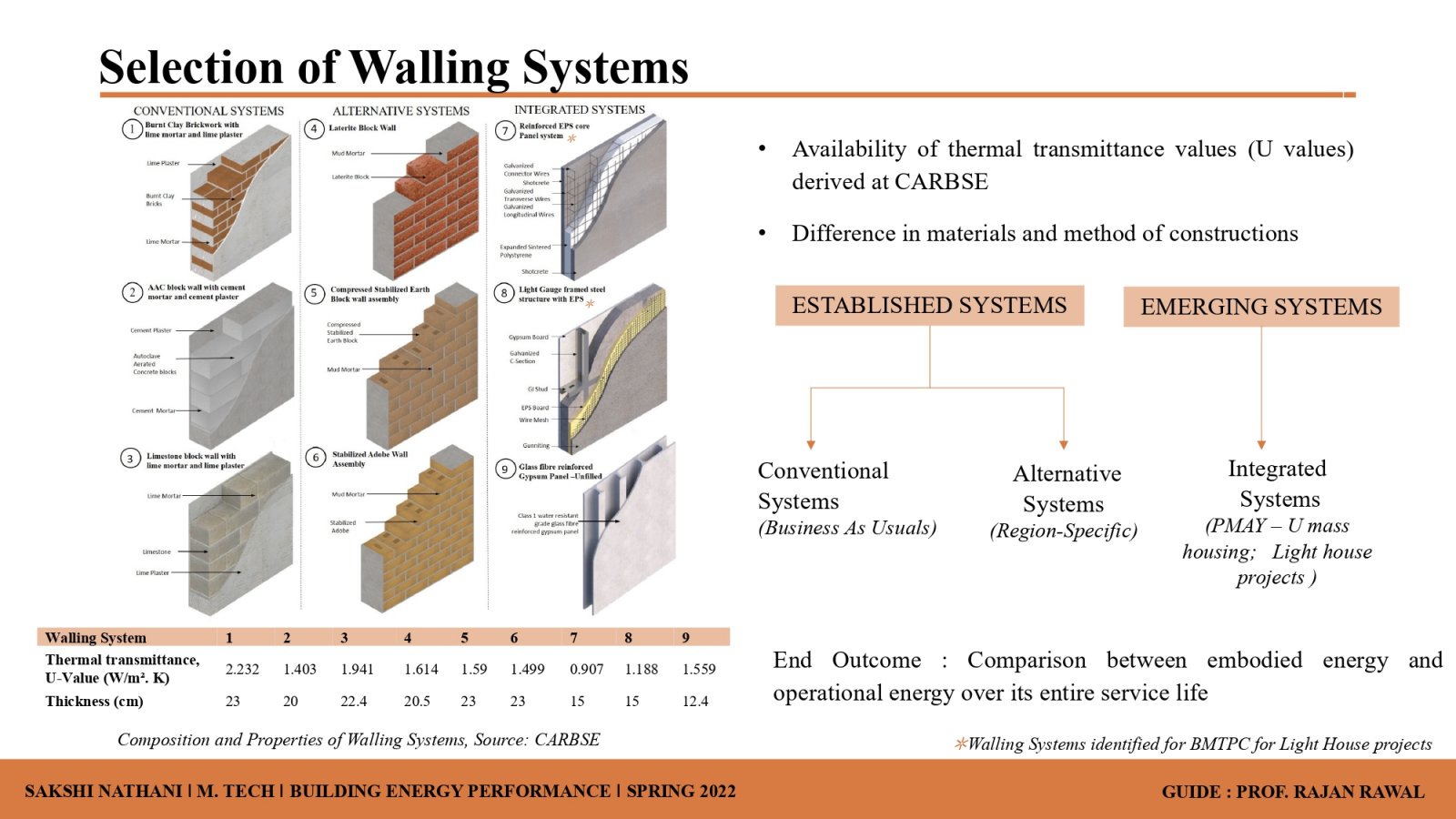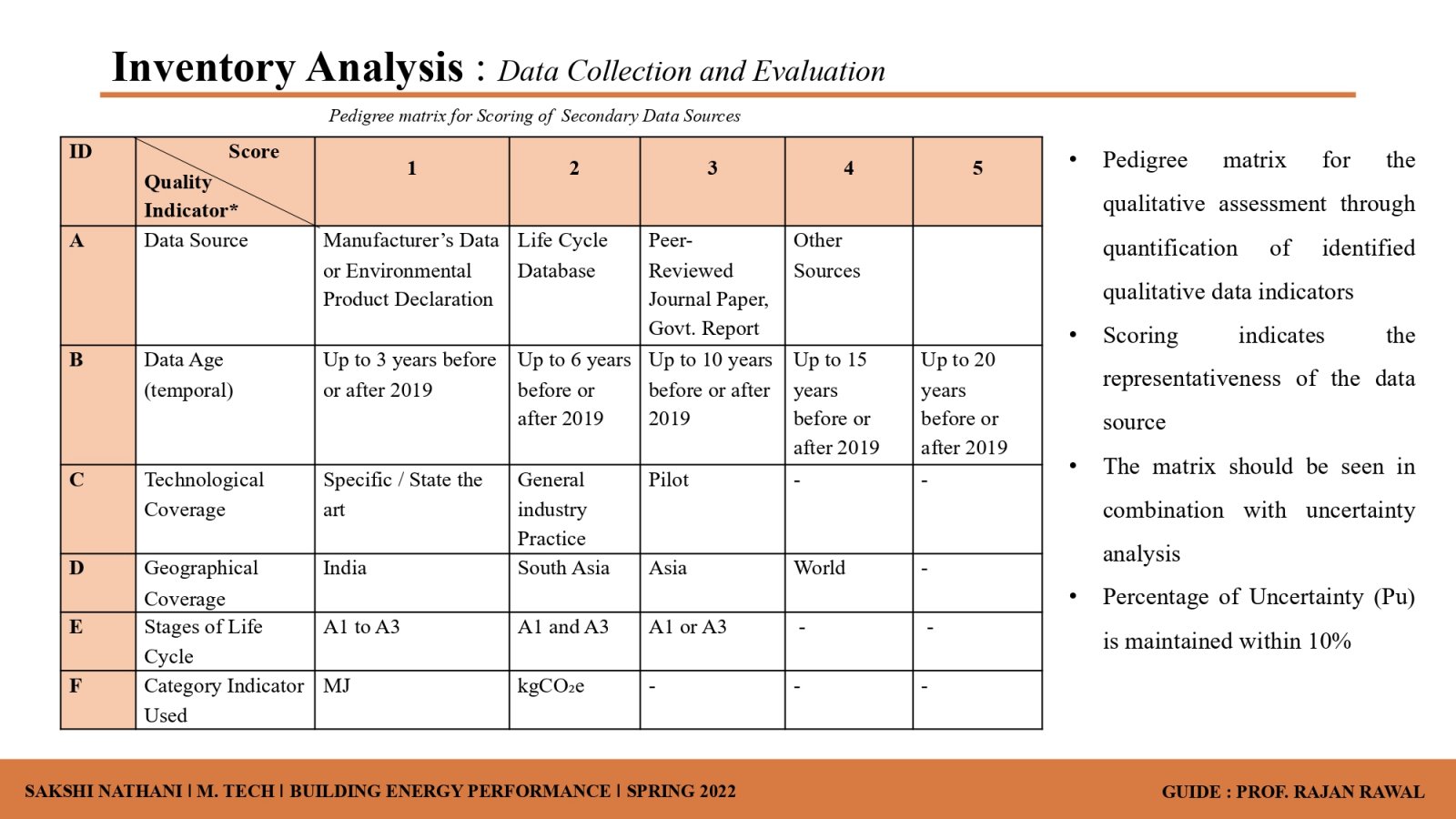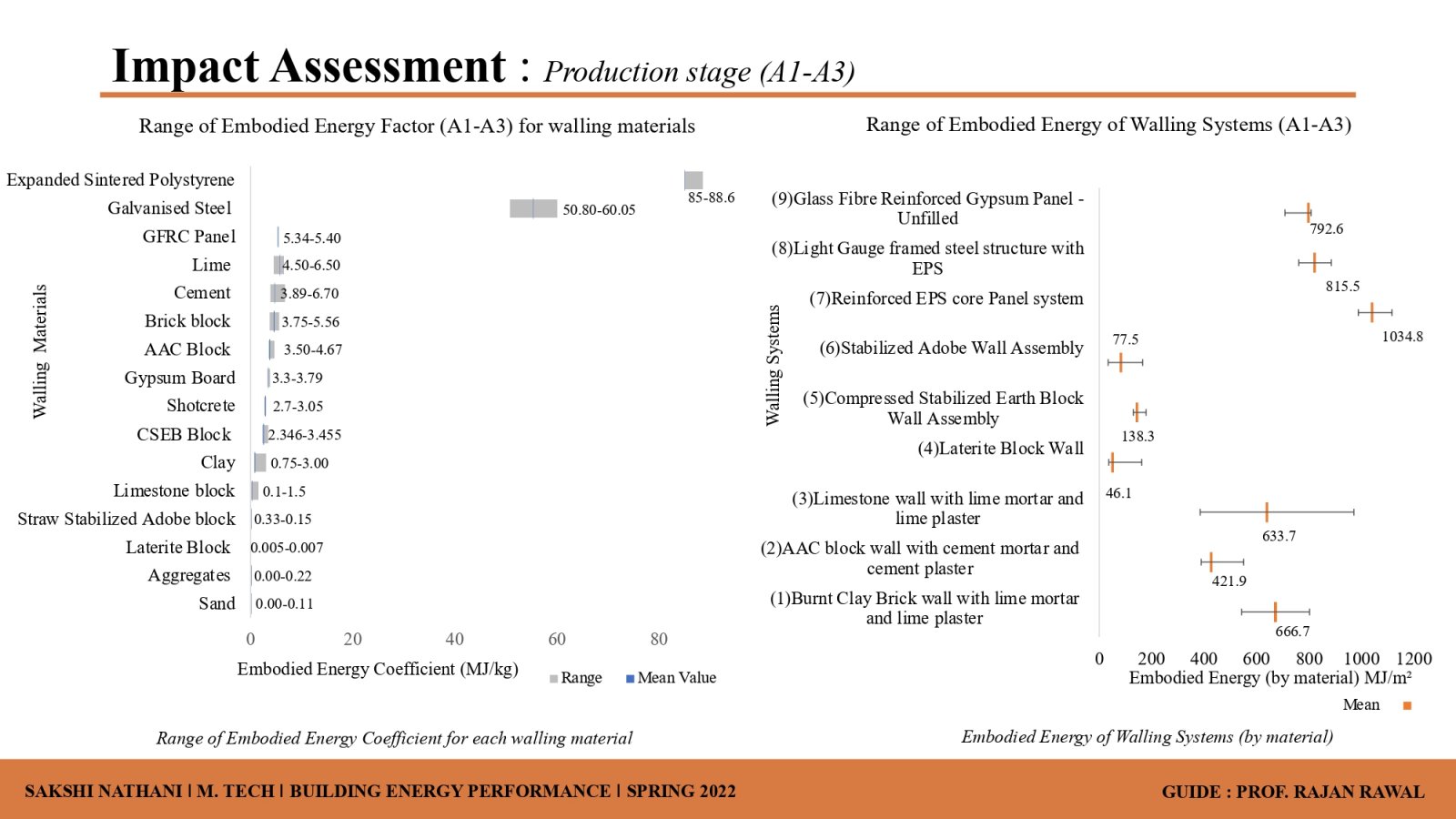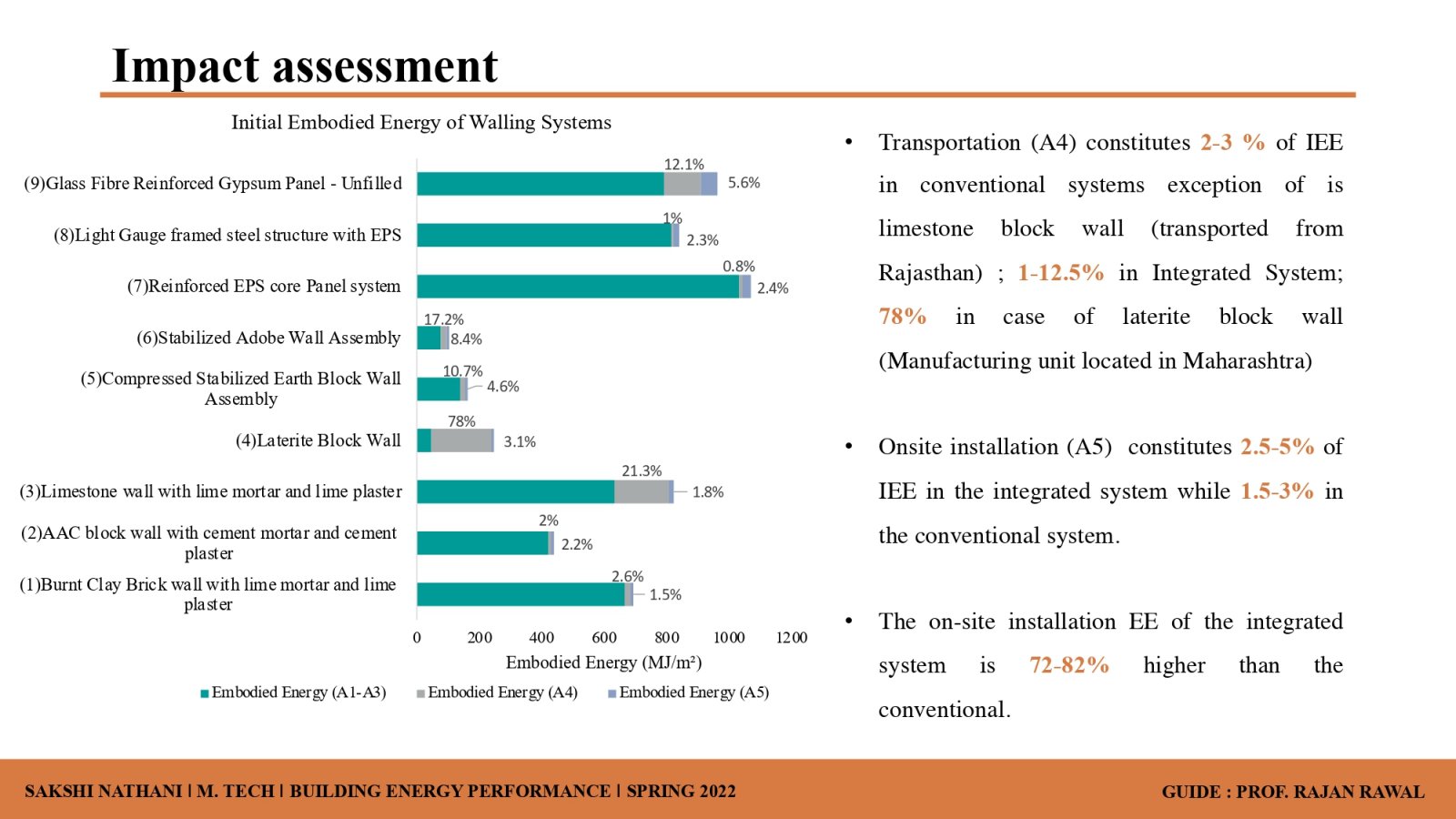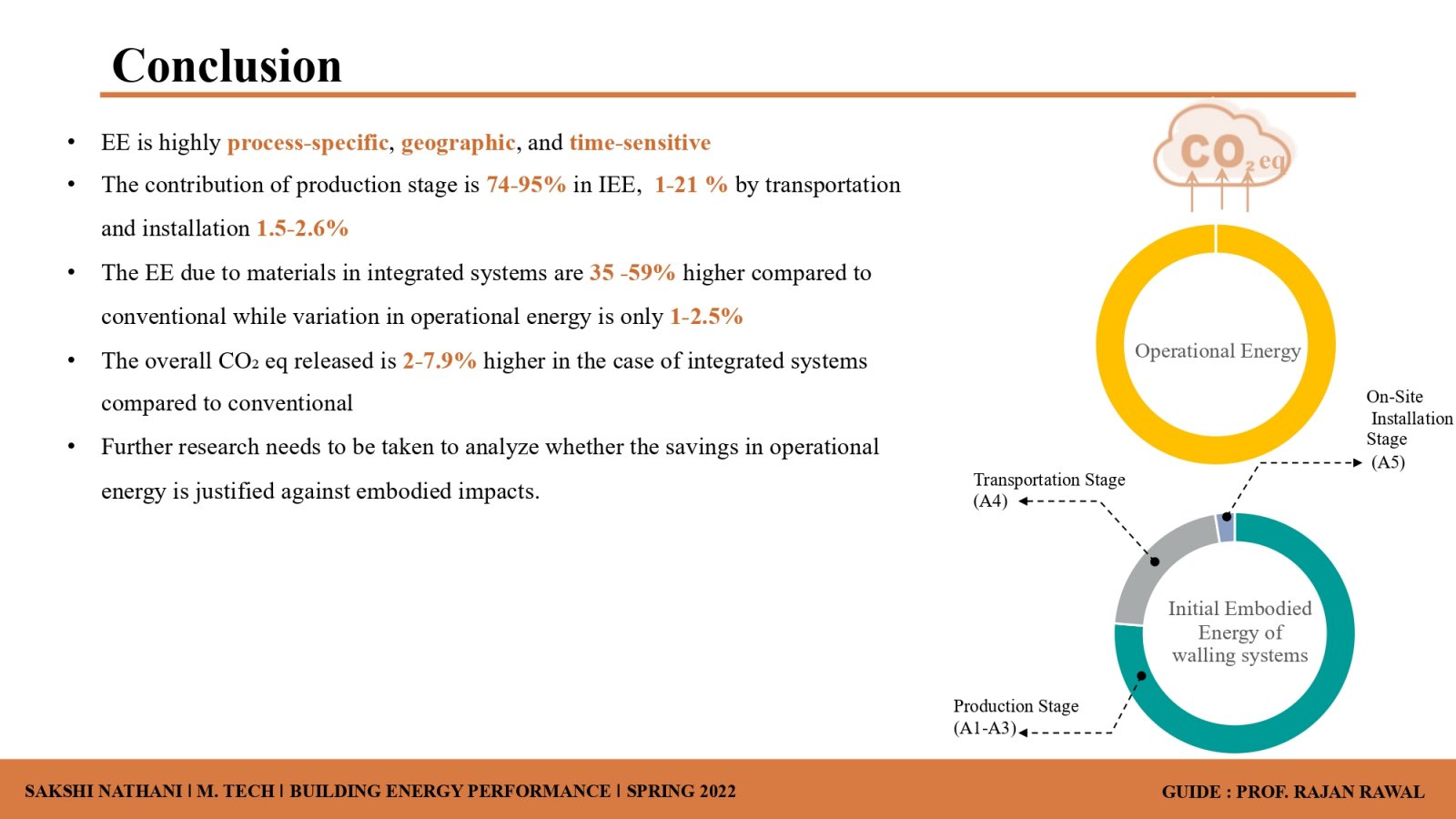Your browser is out-of-date!
For a richer surfing experience on our website, please update your browser. Update my browser now!
For a richer surfing experience on our website, please update your browser. Update my browser now!
This study is directed to embodied energy assessment of industrially produced walling systems, that are identified as a substitute for conventional systems to meet the affordable housing demand in India. These technologies provide quick construction time and are economically affordable. Along with the available thermal heat transfer coefficient (U-Values), this database will be useful in the selection of walling technologies to address embodied and operational carbon emissions. The requirements for performing Life Cycle Assessment have been formalized in ISO 14044. However, the lack of availability of one comprehensive national dataset for all materials makes it necessary to adopt a robust framework that deals with sensitivity and uncertainty analysis. The study presents the methodology for conducting Life Cycle Analysis with an understanding of system boundaries, data quality requirements, consistency check, and interpretation of results. The functional unit considered is a square meter of a typical dwelling unit for 50 years. The results show industrialized walling systems have 35-58% higher embodied energy than conventional walling assembly. This comparative database of external wall systems will help to make an informed decision regarding the selection of materials and systems to obtain 40-50% reductions in embodied energy emissions along with carbon offset plans for the building.
